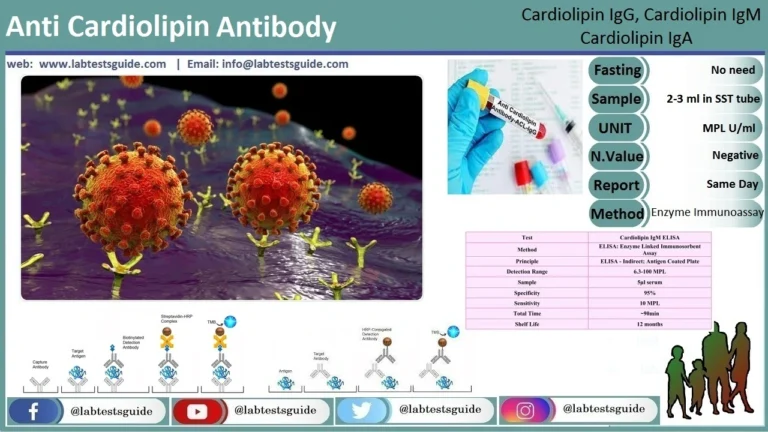Serum BUN (Blood Urea Nitrogen) refers to the measurement of urea nitrogen in the blood. As previously explained, urea is a waste product formed in the liver as a result of protein breakdown. It is then transported through the bloodstream to the kidneys, where it is filtered and eventually excreted in the urine. The BUN test is a common blood test used to assess kidney function and to provide valuable information about the body’s nitrogen balance.

| Also Known as | BUN, Urea Nitrogen, Blood Urea Notrogen, Serum BUN, Urea Nitrogen Test |
| Test Purpose | BUN is a measurement of the Nitrogen in the bloodstream. |
| Test Preparations | No Special Preparation Required. |
| Test Components | BUN, Blood Urea |
| Specimen | 2 ML (0.5 ML Min.) Serum From 1 SST. Ship Refrigerated Or Frozen. |
| Stability Room | 2 Hours |
| Stability Refrigerated | 1 Week |
| Stability Frozen | 2 Weeks |
| Method | Routein Chemistry |
| Download Report | Download Report |
BUN levels tend to increase when the kidneys or liver are damaged. Having too much urea nitrogen in the blood can be a sign of kidney or liver problems.
Panel Tests: Urea, Blood Urea Nitrogen, Creatinine, Calcium, Phosphorus, Albumin, Magnesium, Total Protein, Electrolytes
Why Get Tested:
- To assess the renal function.
- As a routine test in the patient with dialysis.
- To assess liver function.
- This may be part of the routine test.
- In patients:
- Has nonspecific symptoms.
- During the hospital stay.
- Prior to some drug therapy.
- Acutely ill patient admitted in an emergency.
When to get Tested:
- As part of a routine comprehensive or basic metabolic panel (CMP or BMP) during a health exam.
- When you have signs and symptoms that may be due to kidney disease or you have a condition that may cause or be worsened by kidney dysfunction.
- At regular intervals when you are being treated for kidney disease or damage.
Sample Required:
- This is done on the serum of the patient.
- No special preparation is needed.
Precautions for Sample:
- If there is Fluoride that will inhibit Urease reaction.
- Avoid hemolysis.
- Protein intake will affect BUN. Low protein diet will give low BUN.
- High protein diet or nasogastric tubing will increase BUN.
- Keep in mind muscle mass which is more in males than females and children.
- Overhydrated patient will dilute the BUN and gives a lower value.
- The dehydrated patient will concentrate BUN and gives high value.
- GI bleeding can cause an increase in BUN level.
- Advanced pregnancy may increase the BUN level.
- Drugs increasing the BUN level are cephalosporin, indomethacin, gentamicin, polymyxin B, rifampicin, bacitracin, neomycin, tetracycline, thiazide diuretics, and aspirin.
- There are drugs which decrease the BUN level are streptomycin and chloramphenicol.
Normal Ranges:
- Urea = 20 to 40 mg/dl
- Blood urea nitrogen (BUN) = 10 to 20 mg /dl
Increased Urea (BUN) Azotemia seen in:
A. Impaired renal function:
Prerenal causes:
- congestive heart failure and Myocardial infarction (CHF).
- Salt and water depletion
- Shock
- Stress
- Acute MI
- Hemorrhage into GI tract
- Dehydration.
- excessive protein catabolism.
- Burn.
B. Chronic renal diseases:
Renal causes
- Glomerulonephritis (GN).
- Pyelonephritis (PN).
- Acute tubular necrosis.
- Renal failure.
- Diabetes mellitus with ketoacidosis.
- Anabolic steroids use.
- Nephrotoxic drugs.
C. Urinary tract obstruction:
Postrenal causes
- Ureteral obstruction from stones, tumors, or congenital abnormality.
- Bladder outlet obstruction from prostatic hypertrophy, cancer.
- Bladder / urethral congenital abnormality.
Decreased Urea (BUN) seen in:
- Liver failure.
- Malnutrition, and low protein diet.
- Impaired absorption of Celiac disease.
- Syndrome of inappropriate antidiuretic hormone secretion.
- Pregnancy.
- Overhydration.
- Nephrotic syndrome.
Effect of drugs and other condition on a BUN:
- Some of the drugs may cause a decrease in BUN like Dextrose infusion, Phenothiazine, and Thymol.
- Increased BUN level may be seen in late pregnancy and infancy because of increased use of proteins.
BUN/Creatinine ratio:
- The normal BUN/creatinine ratio is around 10:1.
- BUN/creatinine ratio in the normal range, in the case of raised BUN and creatinine. This will suggest intrarenal disease:
- Glomerulonephritis.
- Tubulointerstitial nephritis.
- When the BUN / Creatinine ratio is raised will suggest:
- Prerenal azotemia.
- Postrenal azotemia.
- These conditions may be seen in hypovolemia or hypotension.
- BUN/creatinine ratio decreased is very rare and this may be seen in:
- Protein deficiency in the diet.
- In severe liver disease.
Possible References Used





